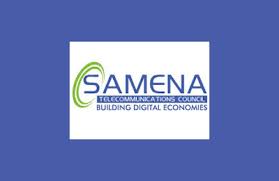 Economic benefits derived from the use of 1.4 GHz SDL technology in MENA could reach $26 billion
Economic benefits derived from the use of 1.4 GHz SDL technology in MENA could reach $26 billion
Dubai – UAE, May 8, 2013: The SAMENA Council today released a white paper to give operators, broadcasters and regulators across the region, insights into a technology solution called SDL (Supplemental Downlink) which could increase the capacity and QoS (Quality of Service) of mobile broadband networks using HSPA+ and LTE-advanced standards. With SDL being endorsed by operators and regulatory bodies across the globe, Samena Council is taking the lead in having a discussion around the potential of SDL technology with stakeholders across the region through this white paper to present relevant technology alternatives to enhance the delivery of mobile broadband services.
According to the white paper, the MENA region could benefit from the technology through enhanced user experience (faster download speeds, larger capacity and richer new content) and low cost rollout of rural services by using the 1.4 GHz spectrum through SDL. The technology could also be used to drive more innovation in specific sectors such as education through professional tele-education, webcasts etc., improve government services through online access to public services and enhance healthcare services through applications such as online health record, emergency room consultation to name a few.
Speaking on the release of the white paper, SAMENA Policy Board Chairman – Dr. Mustafa AYKUT (Turk Telekom) said: ‘As mobile data traffic continues to grow exponentially, greater bandwith is required now more than ever. Given that two-thirds of the world’s mobile data traffic will be video by 2017, new and innovative solutions are needed to increase mobile broadband capacity and enhance quality of service which has the potential to benefit the MENA region by $26 billion over the next 10 years. In this respect, SDL technology is not only a promising solution but a technological breakthrough that offers smoother user experience through faster download speeds, larger capacity and richer new content. With SDL, operators can now manage and optimize mobile communication networks of the future.’
Mobile Supplemental Downlink (Mobile SDL) is a feature within a mobile broadband system, which by means of base station transmitters in the network, is able to provide a supplemental downlink capacity to efficiently carry comprehensive text, voice, images, sound and video content to mobile devices.
Mobile broadband traffic and especially downlink traffic in the MENA region are forecasted to grow rapidly over the next 10 years and it is possible that countries in the MENA region may face a spectrum shortfall unless operators undertake costly investment in network infrastructure to support this traffic growth. The 1452-1492 MHz spectrum frequency range, largely unused in much of the MENA region and in Europe, presents a real option to address this shortfall of downlink capacity. In some countries of the MEA region, the mobile data traffic has jumped over 450% year-on-year between 2011 and 2012. The exponential traffic growth is estimated to continue to be strong in many countries in this region due to the increasing consumption of multimedia services.
About SAMENA Telecommunications Council
SAMENA Telecommunications Council is a tri-regional, non-profit telecommunications association that represents over 40 telecommunications operators in 25 markets, representing an aggregate subscriber base of 790 million mobile users, including mobile broadband users, 79 million fixed-line users, and 22 million broadband users. The Council’s membership embodies a community of telecom operators, manufacturers, government bodies, academia, and leading global management consultancy organizations. SAMENA’s Board of Directors and member companies include the largest regional operators and global multi-network operators as well as new competitive entrants. SAMENA focuses on digitization and broadband investment policies, and aims to promote beneficial regulation and governance that further industry evolution, as well as cooperation among key ICT industry stakeholders.
